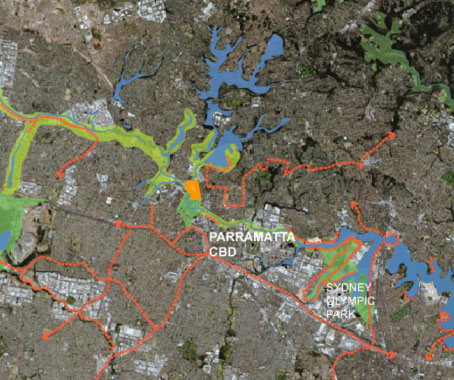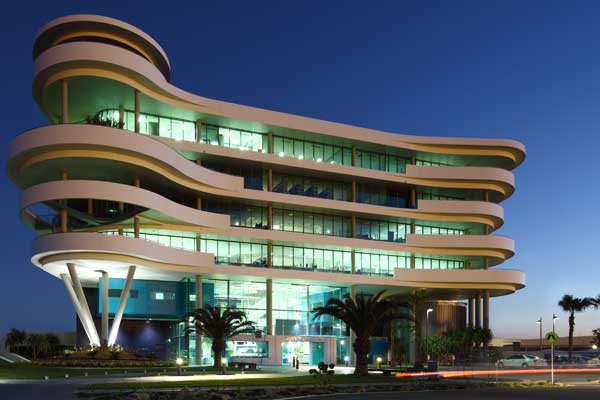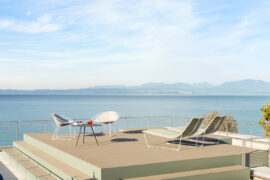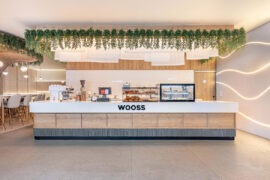As the City of Villages continues to grow upwards and outwards, a strong vision for the future is paramount, writes Ola Bednarczuk.
November 26th, 2010
The problem with our cities, says critic and columnist Elizabeth Farrelly, is the way we see them; our inability to change the way we look at our built environments. The future of Sydney, then, depends on a vision and a mechanism that achieves what past visions were unable to do.
At the Australian Institute of Architects’ Visions of Sydney seminar yesterday, Farrelly along with City of Sydney Councillor John McInerney and NSW Government Architect Peter Mould took to the podium to discuss their vision for the Sydney of the future, and what we can do now to make it happen.

How to cope with density in a city with a rapidly growing population was a key concern for all speakers.
Mould highlighted the importance of using environmental conditions to inform planning conditions. His vision for the Sydney of 2040 is one of a series of interlinked green corridors comparable to East London’s Green Grid initiative.
According to Mould, building density around these corridors while maintaining the natural biodiversity of the environment, restoring water, creating more natural environments for recreation and building bike lanes for transport are all simple actions that have the ability to solve key infrastructure issues.
McInerney highlighted the importance of simple measures rather over extreme solutions. “Let’s find the successes that we have already here,” he said, “and build them up.”
He noted the 2004 vision of ‘Sydney as a City of Villages’ as one that will lead the city forward into the 2040 period. Kings Cross, Erskineville and Surry Hills all provide excellent examples of vibrant, dense communities he explained.
The challenge for the future, McInerney said, will be to spread this vitality into the other city villages. Narrowing traffic movements and slowing down cars, imbuing them with a pedestrian quality will be key to the revitalisation of the CBD village.
Creating a combination of pedestrian and cycling routes to form what McInerney calls a “liveable green network” will make the city more attractive and pleasant to live in.
Work is currently underway on a 200km cycleway network worth $87 million which, for McInerney, “will be the City Council’s great legacy.” Contracts are also underway for a sophisticated water plan, waste plan and power network that will help to achieve the Council’s Green Infrastructure Master Plan.
Speakers agreed that the city of the future will be “compact, connected, equitable and sustainable”. What’s needed now is a clear vision and strong mechanism to put this in place.
Photo above by Patrick Bingham-Hall
Courtesy of the City of Sydney
INDESIGN is on instagram
Follow @indesignlive
A searchable and comprehensive guide for specifying leading products and their suppliers
Keep up to date with the latest and greatest from our industry BFF's!

Welcomed to the Australian design scene in 2024, Kokuyo is set to redefine collaboration, bringing its unique blend of colour and function to individuals and corporations, designed to be used Any Way!

A curated exhibition in Frederiksstaden captures the spirit of Australian design

A longstanding partnership turns a historic city into a hub for emerging talent

For Aidan Mawhinney, the secret ingredient to Living Edge’s success “comes down to people, product and place.” As the brand celebrates a significant 25-year milestone, it’s that commitment to authentic, sustainable design – and the people behind it all – that continues to anchor its legacy.

Technology and a globalised world are changing the face of architecture. ThomsonAdsett’s Chris Shaw sits down to discuss these changes, his work and the future
Dahmstudio, the brainchild of Federica Martinetto, brings 3 beautiful European brands to Australia. Here is their story.
The internet never sleeps! Here's the stuff you might have missed

Arper expands its outdoor offer by re-engineering some of its most recognisable indoor pieces for life outside.

Serving up the perfect dessert is about more than what’s in the crockery, it is also about cultivating an ambient, immersive setting that enhances the treats.